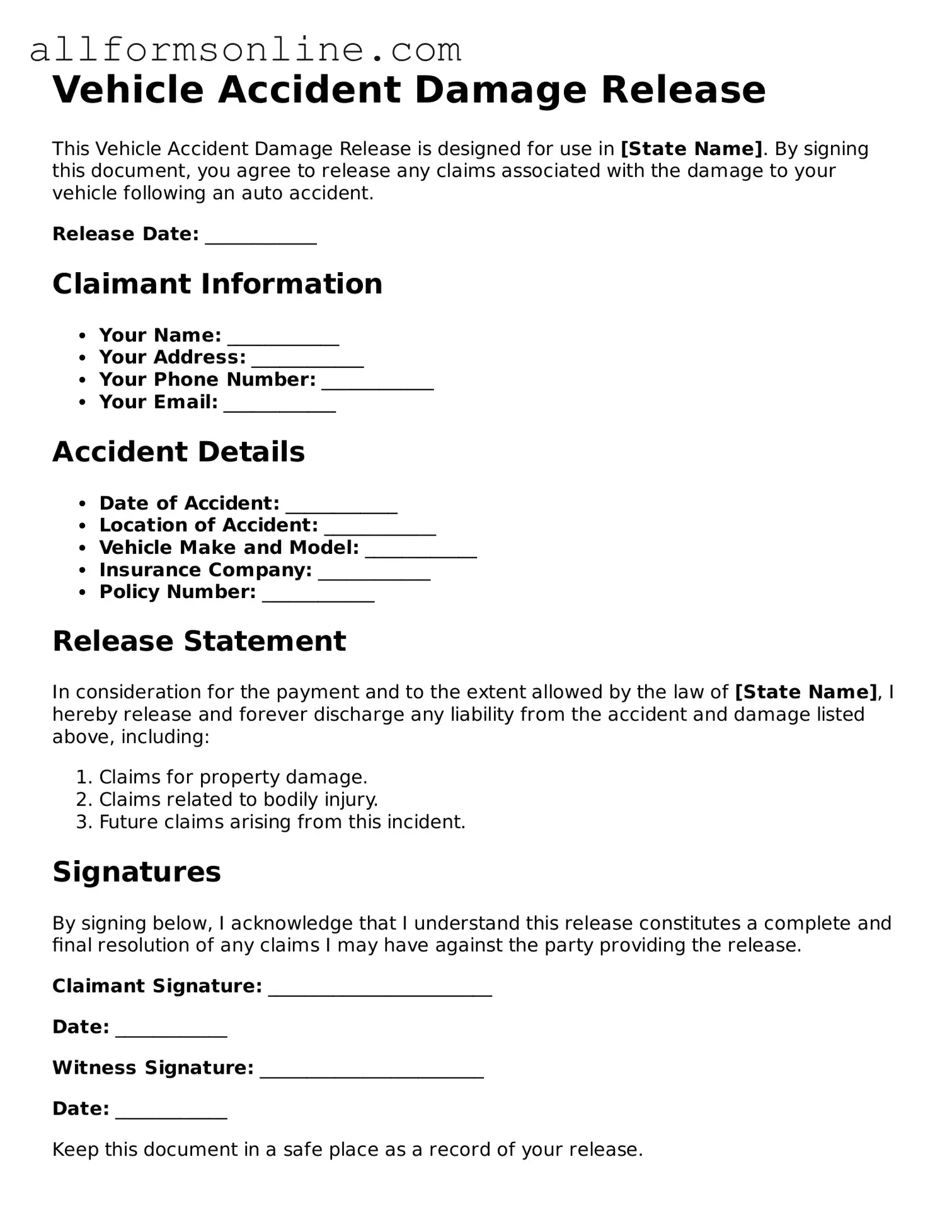What is a Vehicle Accident Damage Release form?
A Vehicle Accident Damage Release form is a legal document that allows a party involved in a vehicle accident to release another party from any further claims or liabilities related to the accident. By signing this form, the individual agrees that they will not seek additional compensation for damages or injuries that may have arisen from the incident. This helps to settle matters quickly and can provide peace of mind to both parties.
Why should I sign a Vehicle Accident Damage Release form?
Signing this form can be beneficial if you have received compensation for your damages and want to finalize the settlement. It ensures that all parties involved understand that the matter is resolved and prevents any future claims related to the accident. This can save time, money, and emotional stress. However, it’s crucial to be certain that the compensation received is adequate for your damages before signing.
What should I consider before signing the form?
Before signing the Vehicle Accident Damage Release form, consider the extent of your injuries and damages. Have all medical expenses and property damage been addressed? Are there any ongoing treatments or potential future costs? It’s wise to consult with a legal professional to ensure that you fully understand the implications of signing the release. Once signed, you may lose the right to pursue further claims.
Can I change my mind after signing the form?
Generally, once you sign the Vehicle Accident Damage Release form, it becomes a binding agreement. This means you typically cannot change your mind and pursue further claims related to the accident. However, if there was fraud, coercion, or misrepresentation involved in the signing process, you might have grounds to challenge the release. Consulting with a legal expert can provide clarity on your specific situation.
Is the Vehicle Accident Damage Release form the same in every state?
No, the Vehicle Accident Damage Release form can vary by state. Each state has its own laws and regulations regarding liability and releases. It’s important to ensure that the form you are using complies with your state’s legal requirements. If you are unsure, seeking advice from a legal professional familiar with your state’s laws can help ensure that your rights are protected.
